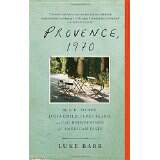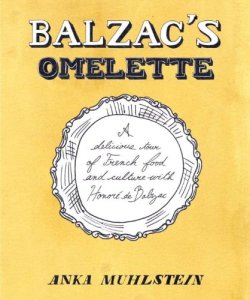In the Seventies there was a big pile of bricks placed in front of London’s Tate Museum. All the tabloids and bourgeoisie scoffed. In spite of their disgust and bewilderment, this pile of bricks forced people to ask the question: what is art?
When you watch a news clip of a fashion show, you tend to ignore it, because it’s mostly unwearable. You can’t see yourself wearing such items to work, or to a show afterwards. And why pay big bucks to look like a circus clown?
Nowadays a reasonable question to ask is: what is food, or cookery? We have gone back to economical nose-to-tail food, which would ideally be sustainable, local and seasonal.
But 180 degrees away from the peasanty larder food, we have laboratory food. It’s easy to envisage toddlers playing with food having not yet been cultured by any notions of a cuisine. And like blank slates, chefs can come up with something like coconut water and coconut milk with dabs of caviar. This is the type of thing they dished up at El Bulli in Spain. It invites surprise, sometimes cynicism, and causes some food writers to roll their eyes and sneer. Or, maybe to think a bit.
In some restaurants, the dishes look quite elemental in presentation. For example, a strawberry dessert which looks like a pile of innids, or a beetroot on a pile of ersatz soil.
These types of dishes look more Dali, the Spanish painter of floppy clocks, than abstract expression or colour field. According to the food reviewers, it’s edible, even though conceptual. Similarly, Damien Hurst’s animals floating in formaldehyde has attracted a lot of publicity.
This molecular gastronomy may be a passing fad. But it has a value in that it forces us to ask the question: what is food? The value of abstract expressionism and colour field paintings forced the viewer to ask a few questions about painting, or the painter. After that, the next period was Pop Art.
Similar to artistic styles and techniques, these celebrity chefs also use new techniques: lots of post-modern techniques such as sous vide, liquid nitrogen, xanthum gum (gelling gum), and soundtracks from an iPod of seaside sounds.
Why do they do this? Maybe these painters and chefs are drawing attention to themselves to keep their mugs in the media? Or, maybe they are experimenting to stretch the boundaries of various food combinations and techniques? Or, maybe a way of top shelf restaurants trying to justify another level expensive ponce?
Heston Blumenthal’s Feasts (on SBS TV in 2011) is very watchable if you are a chef and have an interest in food history. Blumenthal said that the future of cooking lies in the past. He uses myth, history and science to provide us with entertainment. But not only us: as the Tudors didn’t have television, feasts were a form of entertainment. According to drama in Shakespearean times, alchemy is about turning base metals into gold. Looks like Blumenthal, who is described as a “pure, crazed genius”, is aiming for a culinary form of gold.
For example, for the Roman feast he made calves’ brain custard with rose petals and garum. (Garum is fermented fish sauce like Thai Nam Pla, and it was the Roman equivalent of our tomato sauce – they had it with everything.) This combination sounds revolting, and in the research and development stage caused the hapless guinea pigs to wretch. So Blumenthal deep-fried the brains knowing that most people like deep-fried food; it’s a traditional post-pub beer-mop. Needless to say the assembled guinea pigs lapped it all up, whereas they would mostly avoid offal as if it were covered in wriggling maggots. It takes an open mind to contemplate eating offal.
The difference is that Blumenthal’s approach refers to history, which makes his food a lot more interesting. It’s a bit tizzied and tweezered, but it’s fun, and fascinating to watch. Your head, as well as your stomach and heart are all fed.
The Blumenthal empire moved operations to Melbourne in 2015 to sell meals for $525 per head, excluding booze. But does very expensive food last the distance?
It seems that a lot of punters want tarted up street food, food trucks and pop-up ramen joints.
Adrian Ferra at El Bulli did not use history as an influence. His style is a lot more conceptual and free form. This is similar to the Cubists at the onset of the Modernist period, who ignored the classical rules and genres dictated by the various academies, schools and salons. They took another look at line, form, colour and perspective, which in turn, forced the viewer to do the same.
Later on, de Kooning and Pollock expressed the emotions and thoughts inside their heads at the time, rather than a realistic representation of the world. And it was labelled Abstract Expressionism.
In their times, they were all written off as charlatans and dilettantes, and some probably still see them like that. Sometimes we see a piece of something in a gallery, and wished they had left it in the shed.
Ferra calls his way of doing things “technique-concept cuisine”. The ingredients have no historical or culinary relationship with each other, eg. He will put coconut milk with caviar, as mentioned before. Or, caviar with green tea and sea anemone. The techniques require knowledge not only of cookery but also chemistry. He transfigures common foods and textures into uncommon.
Ferra is a heretic; he ignores the western canon of cuisines. Cooking started out with cave dwellers using heat to transform raw ingredients into something palatable. Advance thousands of years and chemists don’t always need to use heat to transform food; they use spherification, thermoregulater, cryovac and liquid nitrogen. And as diners, we not only use knives forks or chopsticks, a few also use a camera.
It extends beyond this. Redzepi’s temporary relocation of Noma to the Mandarin Oriental Hotel in Tokyo couldn’t have been more costly if they tried. The dining room had to be refurbished and special expensive crockery had to be made just for their residency.
It seemed as if the solution to a problem was worse and more costly than the problem itself. Plus too much anger and frustration in the kitchen. All so they can charge jetset punters about £230 per head. Would the customers really notice crockery bought in Tokyo? Will it make the food taste any different? Doubt it.
And re ingredients, Redzepi was one of the chefs who started the foraging movement. This practice dates back from peasant times, so would it be pretentious to sell it for a motza in an expensive restaurant?
When food production became industrialised, the corporate marketers had to influence shoppers to buy their products. Terms are used as inducements, such as “faster action”, “all leather” “safer”, “added ponce” and “secret ingredients”. But KFC went one better and added “11 secret herbs and spices”.
Now the inducements are not only new ingredients such as grass and seaweed, but also we need a sous vide machine to cook them slowly. Don’t forget to take a photo of it – the food needs another condiment – the camera. These complex formulae, equipment and ingredients cannot of course be disentangled, otherwise they would no longer be secret.
But wait, there’s more…….and this is about what’s happening off the plate and outside the kitchen. The newest killer app is yet another level of ponce. On a degustation menu each dish is matched with wine. Now you can get it matched with an infused water to “make a memory” of it. My guess is that they would taste something like water which has been sitting in the fridge too long and tastes of cucumber. This would normally go straight down the plug hole. This is called neuro gastronomy which is meant to appeal to the diner’s senses.
There is also the literary dish – each dish serviced with a card, eulogising the product’s life and a chronology of its life before its demise, and entry into our mouths. I’m sure the diner would appreciate the work of literary and culinary genius and maybe stick a red spot on it. Just as one does in a private commercial art gallery.
Why is sensory experience no longer enough for food? Can’t it just be food, instead of a fetish? Does it have to mean something over and above sensory and gustatory experience?
Maybe reality TV and documentaries about food could learn something from porn: there’s no story behind it. It’s simple physical gratification.
It’s not just chefinators. There is criticism that the food movement could be seen as elitist? For example, Alice Waters, Mark Bittman, and Michael Pollan. What is a locavore called when they dish up the paradox of travelling around the world and talking about sustainable food? Or bloggers who go to Italy to do a course on pasta sauces with a celebrity chef. Carbon foot print? Food miles?
Does showmanship and social media cut it? Bragging rights of the conspicuous consumers? Plus, whatever the reason people photograph their food perhaps the snappers need to desist from their interruptions. I’m sure most chefs would like the snappers to concentrate on the taste of the food instead.
However, the chefinators and snappers can look forward to: soylent meal substitute, printed out food.
Maybe Blumenthal, Redzepi and Ferra could do some chem lab tests with soylent, seaweed and cultivated meat. Then put it in the 3D printer with some water and print out a lasagne. Yuuuummmm. Cheap as chips and the non-cooking geeks would lap it up without having to go into the kitchen. Here’s a new addition to their repertoire apart from soylent shakes, food pills, burgers and noodles.
Their local café could also offer catering: they could go in and print out their own dinner.

 Anka Muhlstein is a travel writer among other things, so she has a gift for description. In this book she takes on Balzac’s characters and their attitudes to food and eating. As well as Balzac’s own relationship with food.
Anka Muhlstein is a travel writer among other things, so she has a gift for description. In this book she takes on Balzac’s characters and their attitudes to food and eating. As well as Balzac’s own relationship with food.